How Ohio State has ramped up Ryan Day's football support staff to compete for titles
As Billy Homer peered at a computer screen one morning in December, he saw a flood of entries.
It marked the opening of a newly established winter window allowing players seeking immediate eligibility to put their names in the NCAA transfer portal, an online database of those switching schools.
More than 500 scholarship players across the Football Bowl Subdivision appeared in the portal on Dec. 5.
“That was hectic,” Homer said.
The frenzy was especially felt by Homer, who serves as Ohio State’s college scouting coordinator.
A former CFL and NFL scout for a decade, Homer monitors activity within the transfer portal, filtering candidates for the Buckeyes.
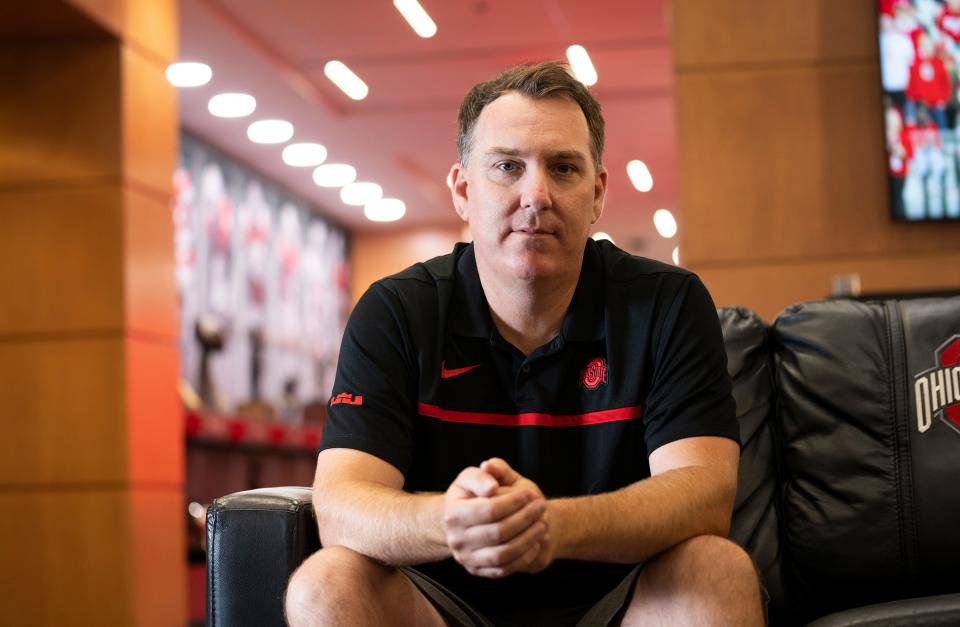
Information is scant. Entries for players list only their school, scholarship situation and graduate status. To piece together an evaluation of a target, Homer looks up statistics and scans cut-ups from Pro Football Focus, an analytics website that also provides data and video packages for teams.
During the busiest stretches, he moves at a breathtaking pace. Due to the volume that emerged in the portal at the onset of the winter window, Homer reserved only about 10 minutes for each player.
“When it’s fast and furious like that and so many names are going in,” Homer said, “it’s really just like scouting triage.”
The need for Homer’s role didn’t exist until a few years ago.
But the relaxing of transfer rules have spawned a wave of player movement, making such positions vital for programs.
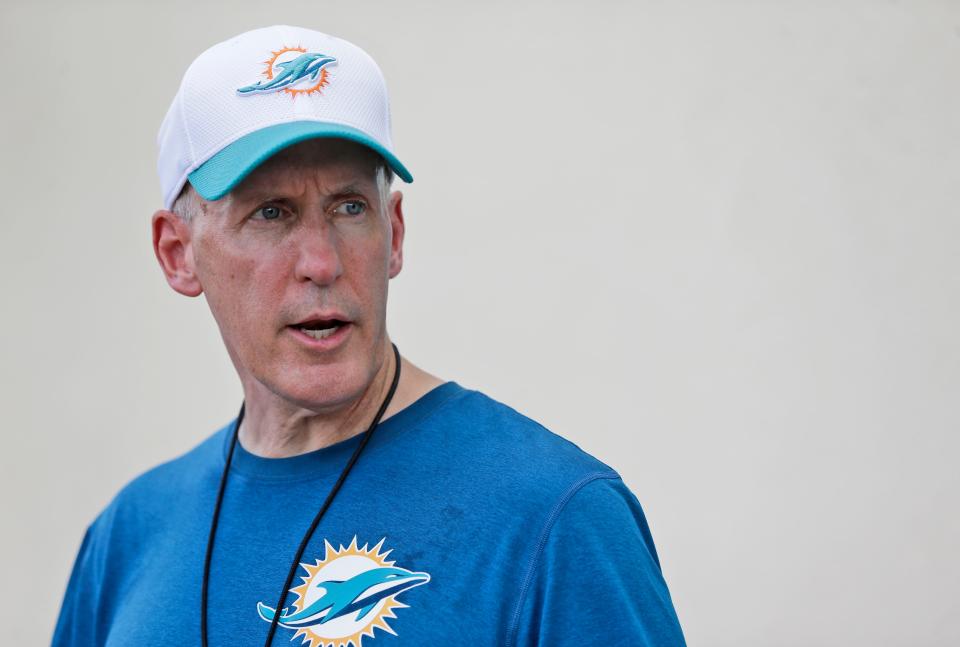
The height of the portal season is when the calendar is crammed. Teams are putting the finishing touches on their high school recruiting classes and preparing for the College Football Playoff or bowl games.
With assistant coaches out recruiting and immersed in postseason prep, Homer sifts for fits on the transfer market. He likens himself to a grocery shopper for chefs.
“The portal’s the supermarket,” Homer said, “and I’m the one going to the store to get the right ingredients.”
In a sport that has become increasingly complex in recent years, Ohio State has responded by expanding Ryan Day’s support staff to address the many facets off the field, from hiring analysts and personnel directors to creatives tasked with building players’ online brands to enhance their name, image and likeness opportunities.
Since Day took over for Urban Meyer almost five years ago, the support staff has increased in size by about 25%, keeping the Buckeyes competitive with their rivals in the Big Ten and Southeastern Conference, the two wealthiest leagues.
“We’ve invested in order to give ourselves a chance to win championships,” Ohio State athletic director Gene Smith said.
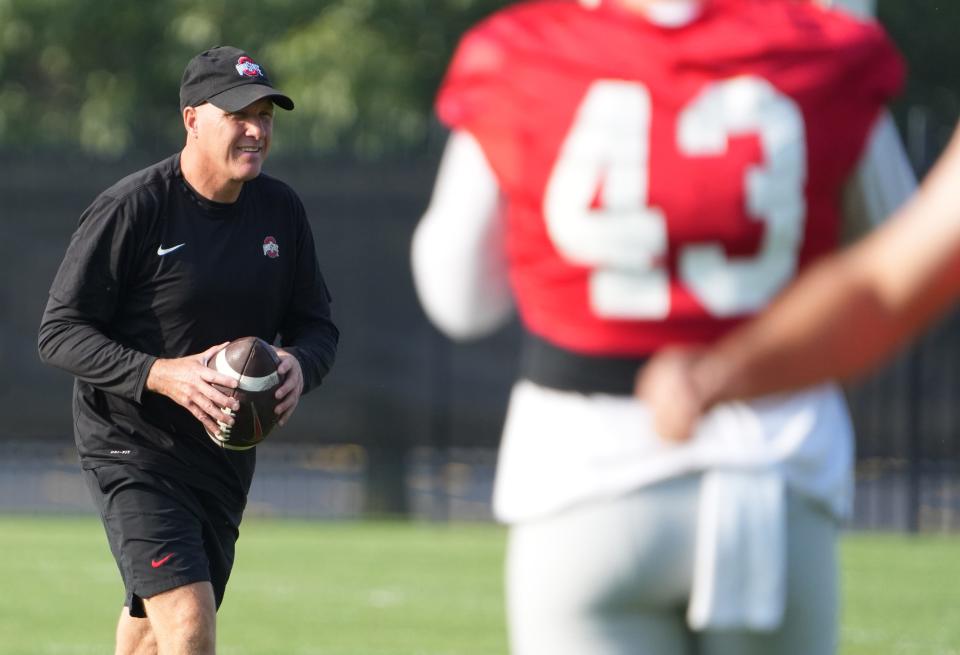
Scope of the spending at Ohio State
Ohio State, like most programs, employed a lean support staff for decades, a group largely consisting of directors of operations, secretaries, equipment managers and strength and conditioning coaches.
It began enlarging in 2005.
Jim Tressel, who was entering his fifth season at the helm of the Buckeyes, hired a high school athletics administrator from northeast Ohio to aid the recruiting operation.
One of the on-field assistant coaches had managed Ohio State’s recruiting strategy with John Peterson, the tight ends coach, holding the title as recruiting coordinator.
But the addition of Greg Gillum, who had been the athletics director at Wooster High School and earlier an assistant at Akron, provided an additional resource.

“Any time you can put somebody working on it all day long versus when they come off the field as just an extra part of their responsibilities, you’re going to be able to spend a lot more time watching high school kids, evaluating, creating the strategy, and all those types of things,” Tressel said. “It was a big plus.”
The hiring continued in the remaining years of Tressel’s tenure before being ramped up by Meyer and continued by Day.
To survey the continued growth of Ohio State’s football support staff, The Dispatch reviewed employee lists, archived staff directories, media guides and salary information obtained through public records requests.
The Buckeyes enter this season with 50 full-time members of their support staff, including 16 quality control coaches and program assistants, six personnel directors and coordinators, two performance dietitians, a chief of staff, a physical therapist and a well-being director, among other roles that form the program’s vast infrastructure. Graduate assistants, interns and student assistants were not counted toward the total.
As part of the investment, the school is spending a combined $6.1 million on the support staff, a figure in addition to the $9.5 million reserved for Day’s annual compensation and $9.3 million dedicated to the on-field assistant coaches’ salaries.
In Meyer’s last season half a decade ago, the support staff included 40 personnel with a combined $3.5 million being paid to the crew.
One reason Ohio State is looking at an expansion of the Woody Hayes Athletic Center is to add more office space for an enlarging staff. The facility has become crowded.
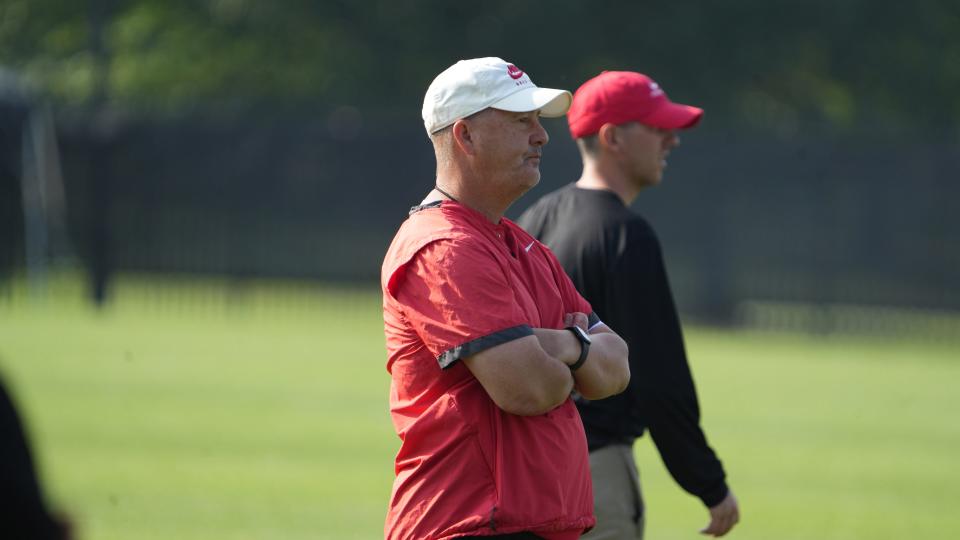
“We’ve got people everywhere,” Smith said.
All FBS programs are limited to one head coach, 10 on-field assistants and five strength and conditioning coaches, but the NCAA has no cap on the number of analysts or other personnel, swelling support staffs across the nation.
Along with an explosion in TV revenue that has prompted an increase in athletic department budgets, it’s the most significant contributing factor.
“It’s grown,” Smith said, “because you’re allowed to do it.”
Boost in brainpower for Ohio State football
Day was searching for experience.
It was why he nearly doubled the number of quality control coaches and program assistants, creating a throng of veteran minds within the Woody Hayes Athletic Center. No area on Day’s support staff has expanded more over his tenure.
Two senior analysts earn six-figure salaries and are eligible for additional postseason bonuses. Joe Philbin, a former NFL head coach who was hired in May, makes $266,667, while Todd Fitch, who came aboard in 2021 after serving as the interim coach at Vanderbilt, is paid $250,000.
Rob Keys, a quality control coach for kicking, also has head-coaching experience. He led Findlay, a Division II program, for more than a decade before joining the staff last year.
Their backgrounds complement an on-field staff that skews young, with half of the assistants in their 20s and 30s.
Youth can pay dividends on the recruiting trail, which demands tireless energy in pursuing sought-after teenage prospects, but leaves gaps in other areas.
“To have the balance of a more experienced coach who has been through it for a few decades makes a big difference,” Day said.
These staffers get into the nitty-gritty, watching film of opponents to identify tendencies or studying their own roster to address specific areas. Day pointed to Philbin’s background with offensive lines and Fitch’s with quarterbacks, two position groups that have dealt with significant roster turnover this offseason.
“Based on their expertise, we try to maximize what they can do,” Day said.
Defensive coordinator Jim Knowles, in particular, relies on support staffers in installation meetings, as some have a deeper familiarity with his complex scheme.
Sam McGrath, a quality control coach for defense, was a graduate assistant at Duke from 2015-17 when Knowles ran the Blue Devils’ defense.
“Think of a high school teacher,” Knowles said. “If he had a lot of help, his classes would have a lot more going on. When you’re by yourself, you can’t do as much. We can do more because of those guys.”
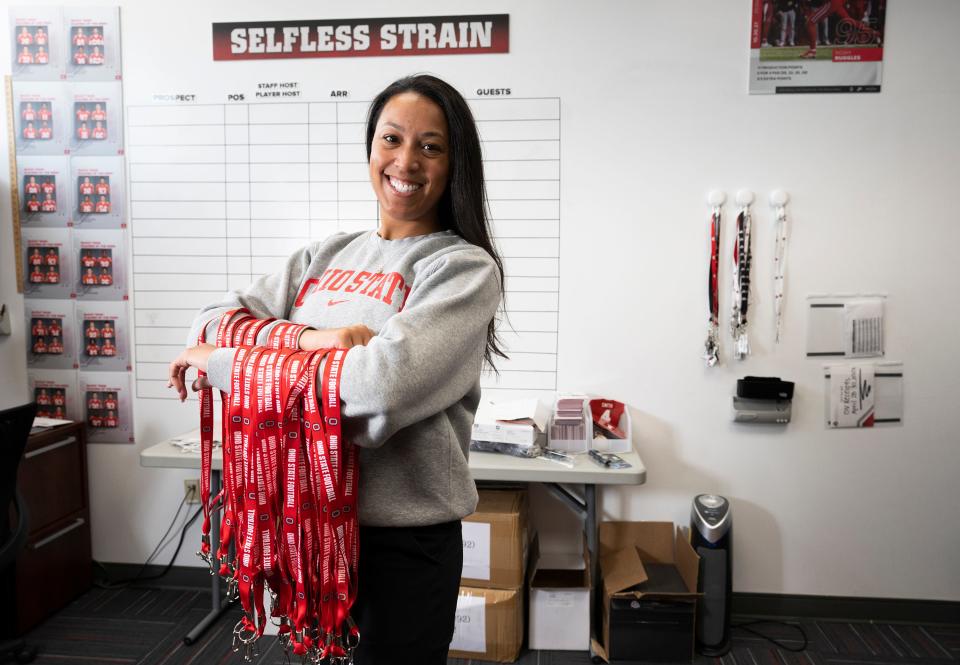
Several of the analysts have long-standing ties to the coaches.
Philbin coached Brian Hartline, Ohio State's offensive coordinator and wide receivers coach, from 2012-14 when he was with the Miami Dolphins.
Fitch was on several staffs with Day, as was Mike Dawson, a program assistant who was most recently a defensive ends and linebackers coach at Nebraska before arriving in March. Dawson was with Day for the start of his coaching career at New Hampshire in 2002.
The connections between the staffers and on-field coaches offer advantages.
“There’s alignment, which is very, very important for staff chemistry,” Day said. “But you also know what you’re getting. And schematically or philosophically, there’s alignment that way, too.”
Day said he wants them on the same page.
“You can bring in the wrong personality,” Day said, “and it can disrupt the room, but the guys we’ve added to the staff have been excellent.”
National growth in football support staffing
The sheet of paper, 11 inches by 14 inches, got Greg McGarity’s attention.
It was in early 2016 when McGarity, then the athletic director at Georgia, gazed at a proposal from his newly hired coach.
Kirby Smart had presented a responsibility tree, outlining the structure of a robust support staff to cover all layers of the program.
“I said, ‘My gosh,’ ” McGarity said.
The staffing required a financial commitment that was not insignificant for the athletic department, but McGarity recognized the attention to detail from Smart, who had a clear vision for each role.
“There is no hands-off with Kirby,” McGarity said. “It’s hands-on. He was involved in everything that went on that touched his program.”
Over the following years, Georgia has constructed a support staff that is believed to be one of the largest in the sport.
A report published by USA TODAY Sports in December revealed the Bulldogs, who were en route to winning their second consecutive national championship, maintained a staff of 56 full-time personnel.
Among other schools in the cutthroat SEC examined by the newspaper, Florida had assembled a support staff with as many as 68 in 2022, while LSU had 61.

A glance at the online staff directory for Michigan, the archrival for the Buckeyes in the Big Ten, shows 37 staffers listed under football.
The results of surveys can vary, as schools measure their support staffs with varying methodologies.
While Ohio State is not far behind the top tier after years of steady growth, it does not see itself in an arms race.
“We’re nowhere near what the SEC is doing,” Smith said, “and we're not going to be because we don't have to be. It's all about what the need is, and what that person brings to the table.”
Smith and Day point to weighing the risk with the reward in hiring. While new staffers might prove assets, they might also struggle to gel with the rest of the stuff, upsetting the chemistry in meeting rooms. For Smith, newcomers always go through a “transition of trust.”
The perspective has tampered any sort of hiring binge at Ohio State.
“There’s a balance of having the right people,” Day said. “If you have too many people, it becomes dead weight. When you think about NFL teams, they’re allowed to have as many coaches as they want. But they only have so many coaches.
“It’s finding that optimum level. You can have so many people where guys aren’t being efficient with their time. So I think we’re in a good spot with the numbers that we have.”
Down to every bite at Ohio State
When Ohio State’s players had finished lifting weights one morning last month, they walked up the stairs to the top floor of the WHAC.
A dining area overlooks their indoor practice field and weight room, a spread with an omelet station, buffet and snack bar. One corner includes a kitchen area with a pizza oven. The letter board affixed to the top reads, “Buckeye Grille.”
Most of the meals that players eat over the year occur along this edge of the facility with supervision from Kaila Olson, the program’s head dietitian.
“We see them for so many meals that we have a lot more control helping them,” Olson said.
Olson, a former softball player at UC Davis who was an intern before her promotion in 2019, writes menus that are prepared by chefs from Levy Restaurants and arranges dinners from dozens of restaurants around Columbus.
That’s all to feed a roster of 120, including scholarship players and walk-ons.
All the food that reaches their plates is highly specified. Olson maintains spreadsheets for each player, containing prescribed meals from breakfast to second dinners.
Calorie needs for the players are high, a result of high metabolisms and an intense exercise regimen from games, practices and weightlifting.
Ohio State’s players receive eating plans as they begin the various cycles of the calendar, known as training phases. Those cover strength and conditioning programs in the winter and summer, as well as spring practice and the season.
“We'll kind of plan out exactly what a player needs to eat,” Olson said.
One morning last month, sophomore safety Sonny Styles asked Caroline Riewe, an assistant dietitian, for help in finding sweet potatoes.
The first dietitian was hired for Meyer’s staff in 2012. A full-time assistant was added two years ago in addition to 10 graduate assistants and undergrads.
“It’s hard to do it all,” Olson said, "so having someone else who knows exactly everyone’s needs is huge.”
Talent search to help Ohio State football
Gift bags of candy and soda await recruits and their families when they check in to their hotel rooms.
They gifts are always the players' favorites. Before official visits to Ohio State, prospects answer a questionnaire asking for their preferred snacks and food allergies. The tiniest details are given a personal touch.
The Buckeyes’ recruiting operation runs deeper than watching hours of film and tracking the transfer portal. They must still persuade the top high school players and transfers to enroll.
Many of the biggest pitches are made when they come to campus, an effort led by Erin Dunston, a director of on-campus recruiting.
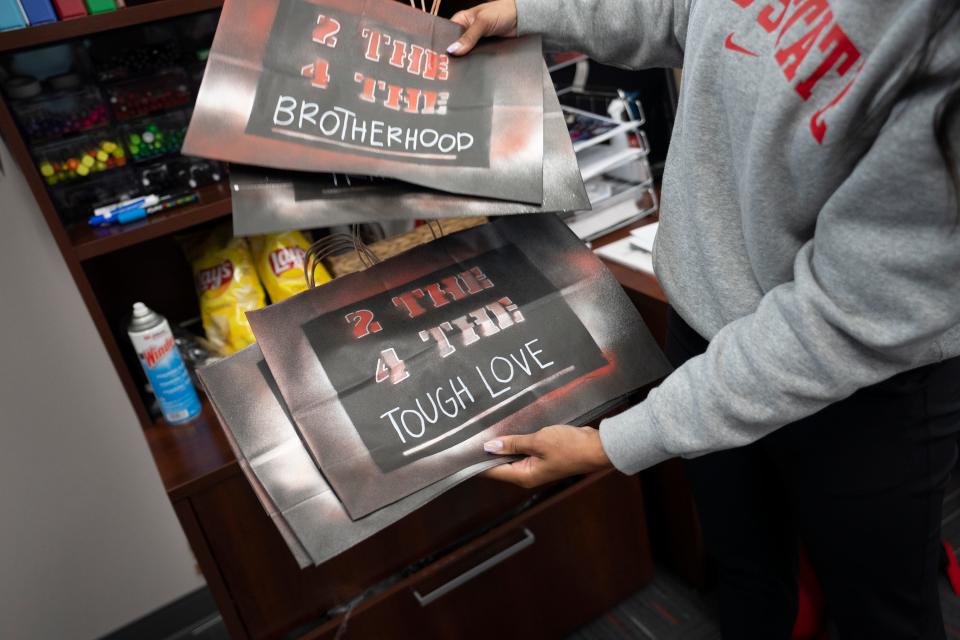
Dunston develops itineraries for the hundreds of recruits who take official and unofficial visits to the school. As of late last month, 541 had already passed through this year, following periods of high traffic in the spring and summer.
The official visits are highly tailored as players are shuttled from meetings with coaches and academic advisors to social gatherings. Mickey Marotti, the head strength and conditioning coach, proposes a physical development plan to each recruit.
“We’re going to make it extra, extra, extra personalized,” Dunston said.
Juggling the stream of recruits and families over a weekend requires a high level of organization. Dunston creates a complex scheduling matrix on her desktop to sort every stop over the 48 hours.
Day said Dunston has done an “unbelievable job.”
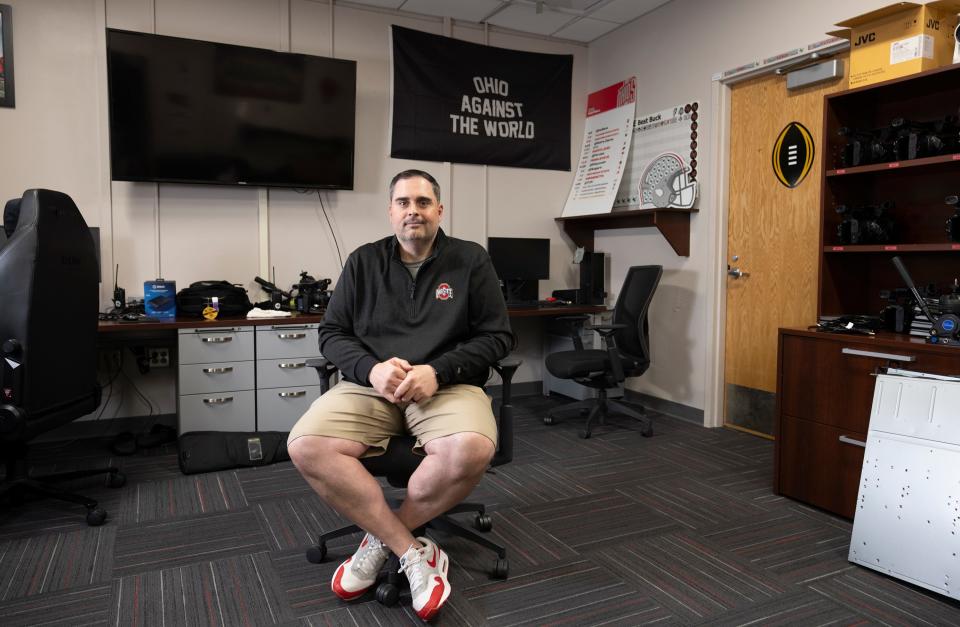
“She’s become an event planner,” Day said. “You think of an event planner, you think of a wedding planner. Well, a wedding planner does the wedding and that’s it. She has the whole weekend.”
The task is steep, as the Buckeyes are competing with other national championship contenders on the recruiting trail. Blue-chip talent matters to everyone.
“You’re recruiting the best players in the country,” Day said, “so they expect a high level of service.”
As Day enters his fifth season at the helm of the Buckeyes, he recognizes how much his role has changed since he first arrived in Columbus in 2017 to coach quarterbacks.
His head-coaching responsibilities involve being a chairman as much as gazing at his call sheet on the sideline at Ohio Stadium on fall Saturdays. There’s an ever-expanding program to manage.
“It’s great,” Day said. “We have great people, great families. It creates an environment where these kids want to be around.”
Get more Ohio State football news by listening to our podcasts
This article originally appeared on The Columbus Dispatch: How Ohio State football has built vast support staff to compete

